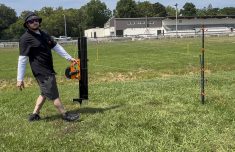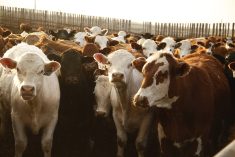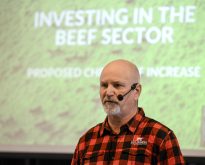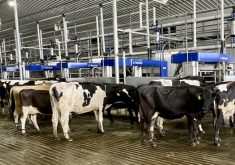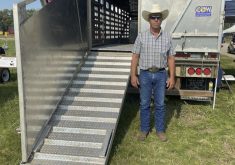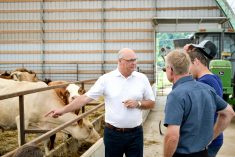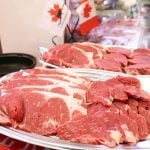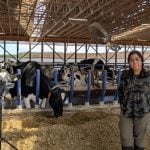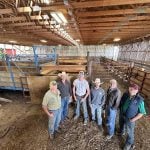Higher prices for beef stocker calves in the fall run have increased optimism and profits for cow-calf producers after a few challenging years.
The last week of October is the busiest for the fall stocker calf run in Ontario, with sales at many auction barns across the province.
At the Keady Livestock Market in Grey County, the Bluewater Black Calf sale brought prices about $700 more per calf than a year ago, according to market owner Scott Kuhl.
Read Also
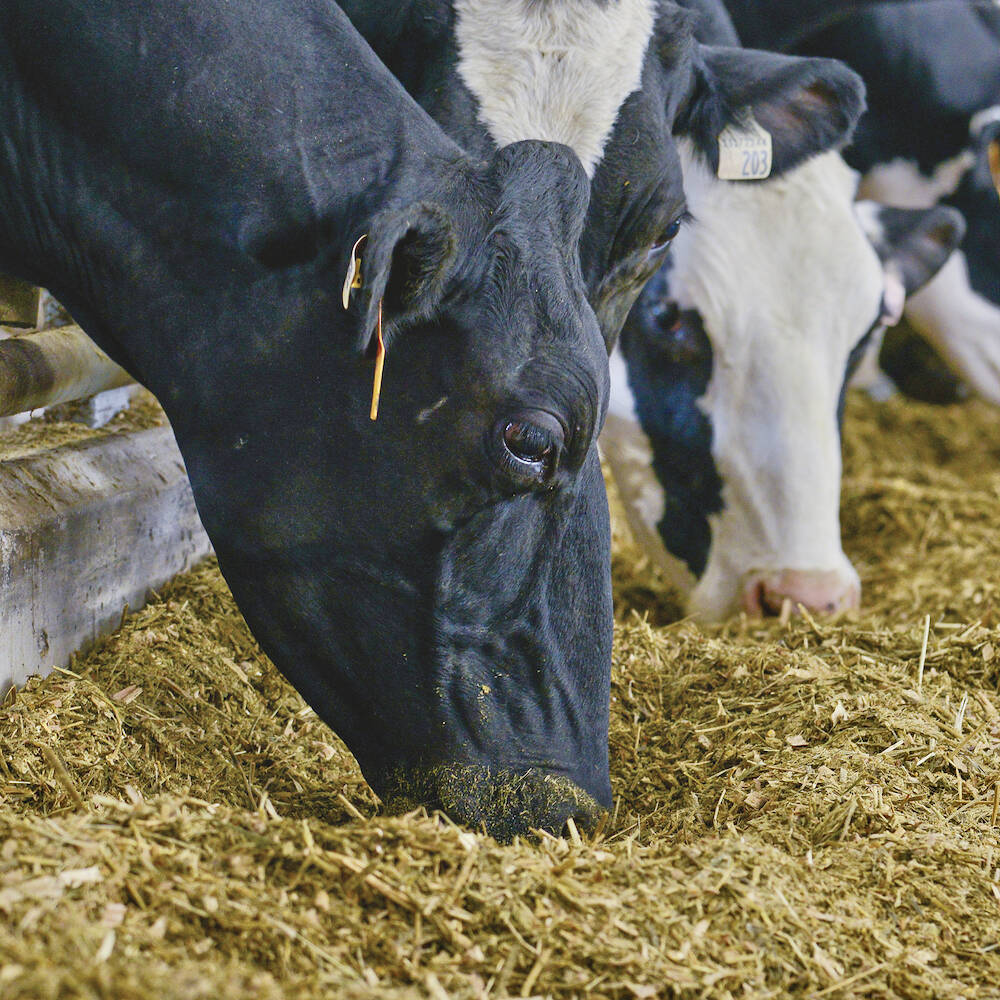
Byproducts with benefits for dairy cows
Local food processors can be a source of financially advantageous byproducts for dairy cows, but make sure the ration is properly balanced.
Why it matters: There have been few market signals to increase the Ontario cow herd. This fall’s calf prices may be the first encouraging sign in years.
Kuhl auctioned about 800 calves Oct. 26, mostly Angus-influenced of varied sizes and quality. Lots ranged from 20 head down to single animals. Top prices for the vaccinated calf sale were around $4.75 per pound for a group of calves averaging 474 lb.
Other sales in Ontario have had similar results. Some lighter calves are appearing at sales, echoing a trend across the country as producers take advantage of strong prices by sending animals to town early.
“We’re seeing western producers sweeping the pastures,” says Rick Wright, chief executive officer of the Livestock Markets Association of Canada and a cattle buyer with JGL Livestock in Manitoba. He says calves are going to auction whether they’re 300 lb. or 700 lb.
“We’ve seen $5 per pound for some peewee calves and we’ve never seen that before.”
The number of beef cows on farms in Canada has declined by about 182,000 from 2019 to 2023, according to Statistics Canada. It’s part of a longer-term decline in most areas of the country.
“This thing (strong prices) should last three, four, five years before we see rebuilding of the cow herd,” says Wright.
It takes two and a half to three years to take a heifer, held back in a sale today, and have her yield a return, said Carl Spencer, as he stood outside the Keady Livestock sale. That biological reality prevents quick expansion.
There is also significant competition in the main cow-calf-raising areas of the province.
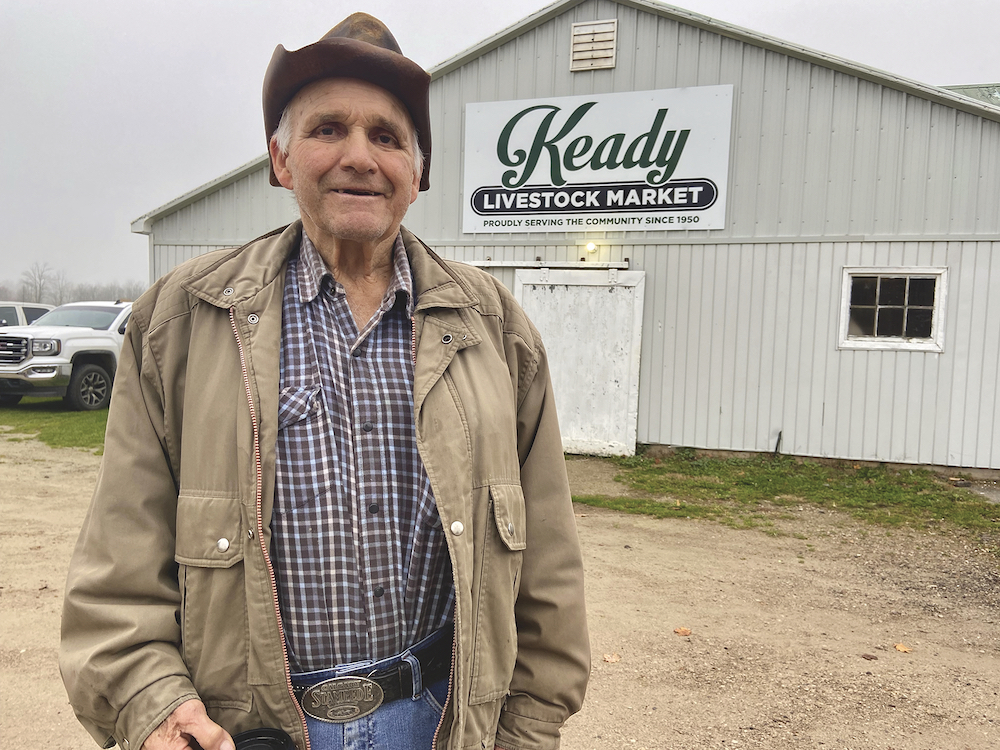
“In our country here and in Ontario, the cash croppers have had a real good run,” said Spencer. “So they’re still plowing land that maybe they shouldn’t even be plowed. They come in and they tile it and then it makes it good cash crop ground, but now it’s no longer pasture land for cattle or hay ground even.
“Our problem here in Ontario is to find land at a reasonable price to run cattle on pasture and grow hay, so that makes it tough for a young fella to decide to go into cattle.”
Spencer has sons who farm with him, but says cow herd expansion depends on finding enough pasture in his area near Tara for that to make sense.
There are strong prices for any sort of beef animal, including cows, so for cow-calf producers nearing retirement age, the time may be right to reduce or disperse the herd, further reducing the domestic herd.
The price of land in Ontario has also made it more difficult for beef farmers to find pasture for cattle.
“I can’t see the cow numbers going up again,” said Kuhl, citing the age of farmers and land competition in Ontario.
The uneasy balance in the beef production chain often means one level of producer is making money while another is not, but this appears to be a rare time when backgrounders and finishers are still making money.
“This was definitely needed for cow-calf producers, to compete with row crops,” says Jack Chaffe, president of the Beef Farmers of Ontario, and a feedlot operator near Mitchell.
“This incentivizes them to put more calves on the ground. We needed this jump.”
Canadian cattle producers missed out on an increase in the value of calves in 2003-04 in the U.S. when Canada was hit by BSE and borders closed, says Chaffe. Another jump in prices in 2014 was short-lived.
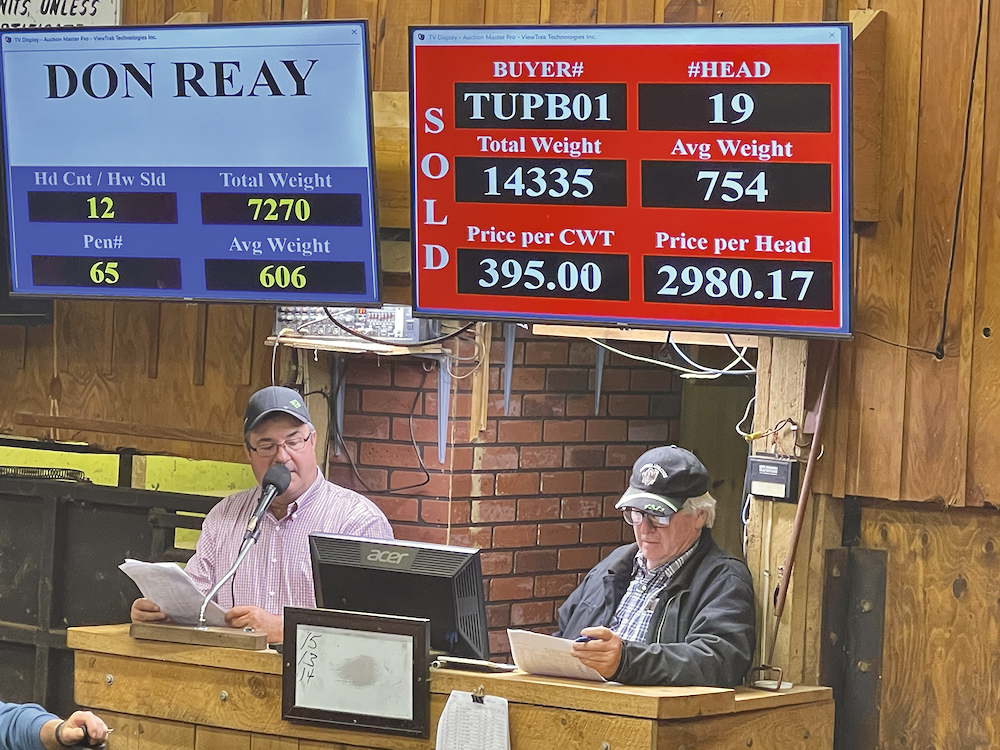
Margins will be tighter for feedlot operators, but “as a feedlot producer, I can’t say this is bad. If we don’t have calves on the ground, we don’t have calves for the feedlot.”
Shrinking cow herds have tightened the market enough that Canada, which five years ago exported calves to the U.S., is now an importer.
“For years, cattle moved north to south, but we’ve been a net importer for three years in a row,” says Wright.
Cattle from Montana are moving into Alberta, and cattle from Missouri and Kentucky are moving into feedlots in Ontario, in the London area and Grey and Bruce counties, he says.
In Western Canada, lack of feed in drought-affected areas has brought more calves to auctions. Producers there also say land competition prevents expansion.
Chad Ross, vice-chair of the Saskatchewan Cattlemen’s Association and an Estevan, Sask. beef producer, has implemented more intensive grazing to run more cows on less land, as he tries to compete with neighbours turning long-time tame pasture grass into canola, wheat or pulse land.
Similarly, Spencer says he is growing more corn for silage as a way to intensify the nutrients produced.
“We’re growing a lot of corn silage to help feed because the hay ground that we used to be able to go and buy standing hay on, it long ago was plowed up.”
The route to more beef cows in Canada has many barriers, some of them entrenched, but multiple years of record prices could bring more cows and calves back to the land.




